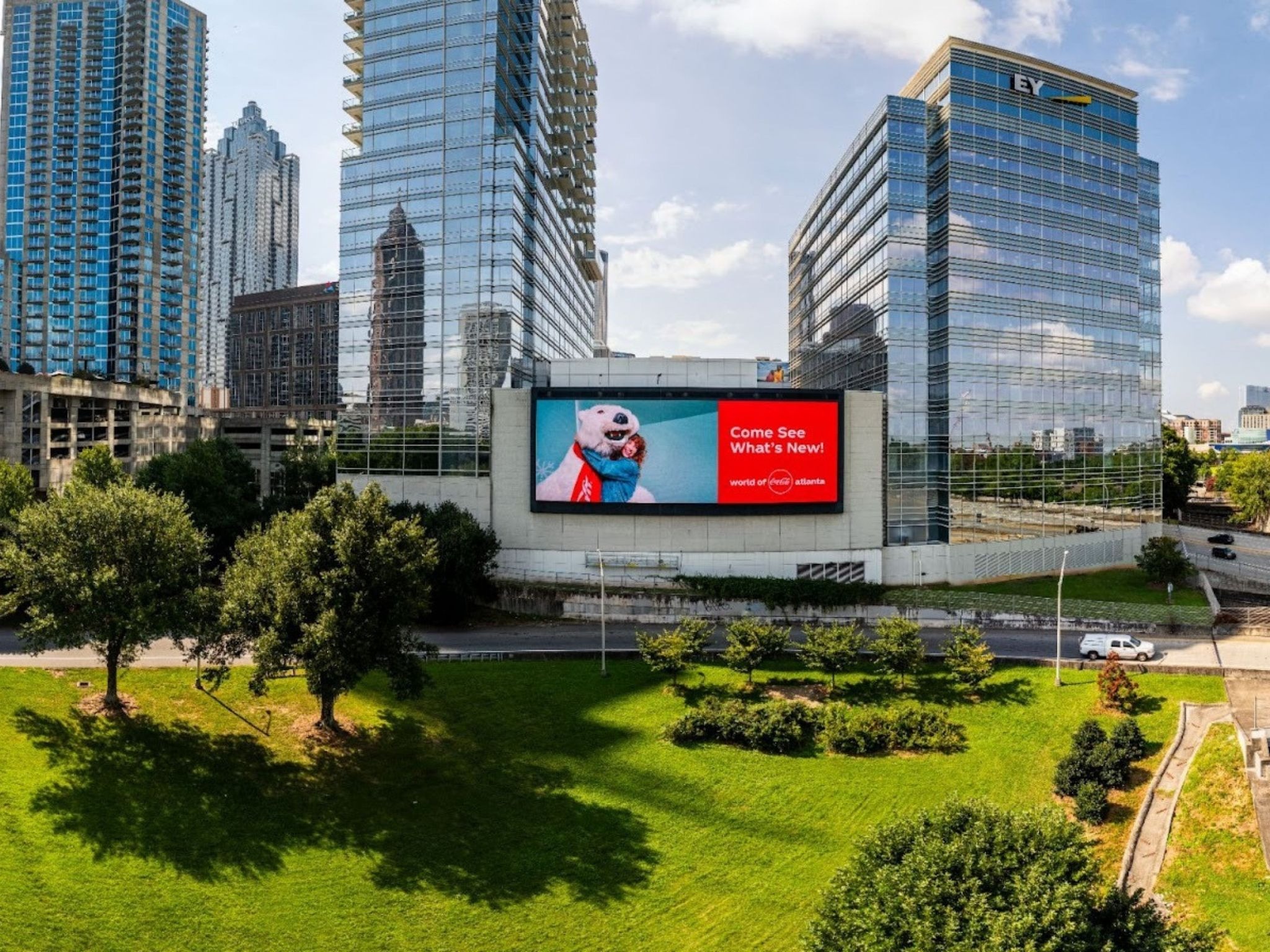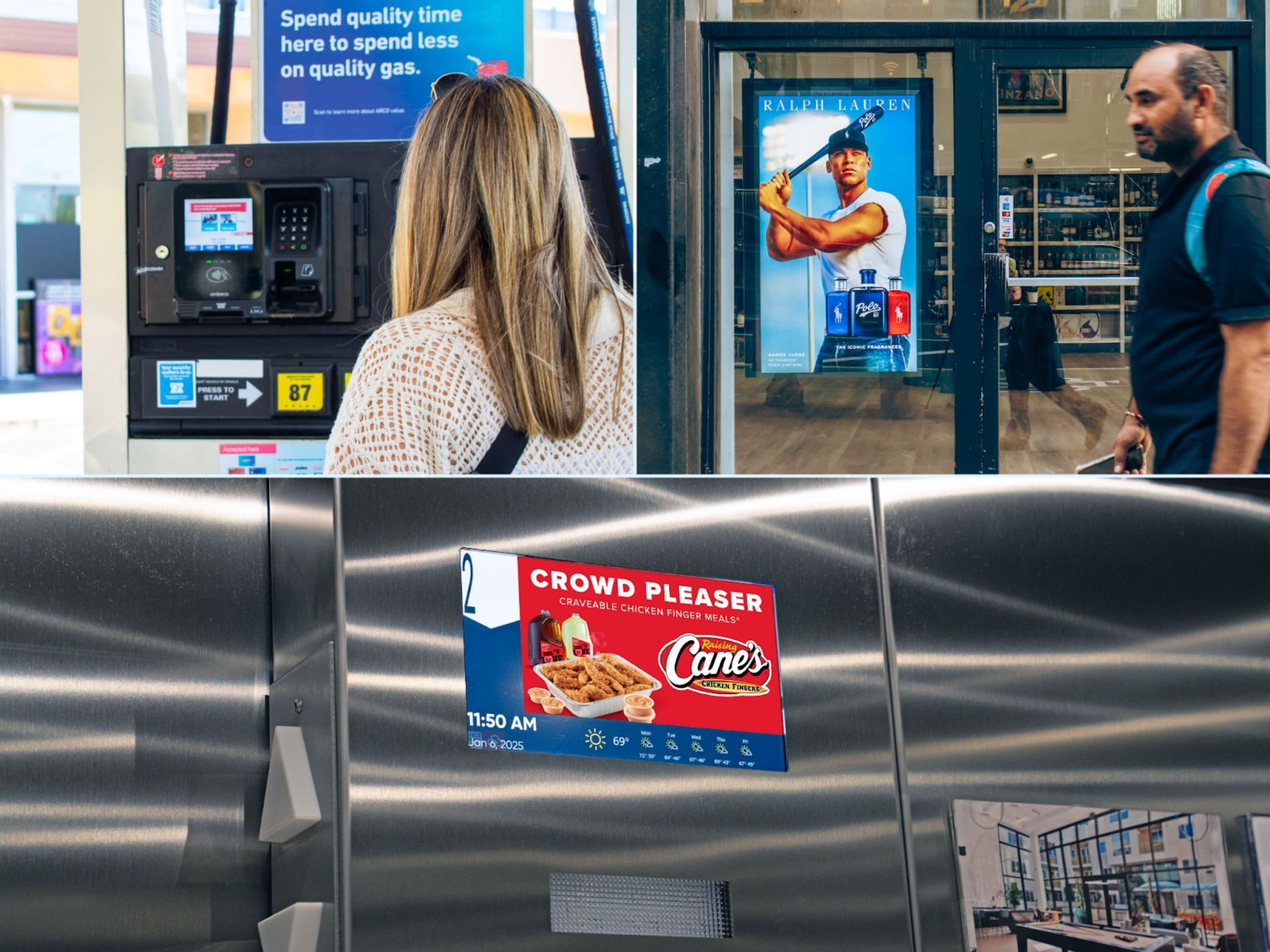The Fédération Internationale de Football Association, commonly known as FIFA, is taking its marketing off the sidelines and onto city streets as the countdown to the 2026 World Cup begins. With more than $5 million already invested in out-of-home (OOH) advertising a full year before the first whistle, it’s clear that OOH and digital out-of-home (DOOH) will be star players in the tournament’s marketing formation.
From fans riding on subways and taxis to travelers flying into host cities, to the crowds gathering outside stadiums, DOOH will be present at every touchpoint, delivering dynamic, bold, and bright unmissable creative. And with the world’s attention locked on the World Cup, brands that want to stay in the game should be ready to shift marketing dollars to OOH and score big with fans.
Why DOOH is the ideal pitch for sporting events
For decades, OOH has been a go-to channel for major sporting events and tentpoles thanks to its presence in physical spaces where fans gather. When DOOH advertising entered the scene, it completely changed the game because brands suddenly had the flexibility to make real-time updates, swap in dynamic creative, and adapt messaging as quickly as the match itself.
Programmatic DOOH has taken this even further, allowing advertisers to adjust campaigns with precision based on location, time of day, weather, or even the score on the field. Imagine a message shifting instantly from “Game Day Starts Here” in the morning to “Celebrate the Win Tonight” just minutes after the final whistle. That level of agility is what makes DOOH such a powerful teammate for FIFA’s marketing strategy.

Strategic tactics: Bringing your campaign to the next level
Beyond flexibility, DOOH brings several winning advantages:
- Visibility where it matters most: transit hubs, airports, fan zones, and entertainment districts—all the places fans pass through on match day.
- Brand-safe environments: placements in trusted, high-traffic spaces, giving advertisers confidence that their campaigns won’t be caught offside.
- Dynamic formats, such as countdowns, live score updates, weather-triggered creative, or AR activations, keep fans engaged in real-time.
- Measurable outcomes: with mobile retargeting, foot traffic studies, and search or social lift analysis, brands can prove ROI beyond just impressions.
- Always-on presence: unlike TV or social ads that can be skipped, blocked, or scrolled past, DOOH is impossible to ignore.
With its ability to scale globally while delivering hyper-local impact, DOOH is more than just part of the media mix—it’s the star striker in FIFA’s 2026 campaign, and should be included in every performance-driven marketer’s campaign.
Playing the home field advantage
Not only is the World Cup making an appearance in the United States, but it’s coming to eleven different cities, each with its own culture, energy, and unique fan base. From international gateways like New York and Los Angeles to rising soccer strongholds like Atlanta and Kansas City, no two markets look the same. Brands can no longer rely on a one-size-fits-all approach. To connect with fans in meaningful ways, campaigns need to adapt city by city, meeting audiences where they live, work, play, and celebrate.
That’s where Screenverse comes in. Using audience intelligence and over 5,000 audience segments available through our programmatic partners, we’ve identified over 59,000 digital screens that reach fans who are more likely than the average consumer to be interested in soccer, soccer activities, and soccer events. These screens span across all host cities, including Atlanta, Boston, Dallas, Houston, Kansas City, Los Angeles, Miami, New York/New Jersey, Philadelphia, San Francisco/Bay Area, and Seattle.

Here’s what that scale looks like in a few key markets:
- New York City: More than 5,800 digital screens across 18 venue types deliver 5 billion available impressions. Transit and taxi screens dominate the landscape with more than 2,600 placements, followed by entertainment venues and bars (931) and residential buildings (664).
- Atlanta: With 3,500 screens across 14 venue types, including luxury residential and Class-A office buildings and grocery locations, campaigns can integrate seamlessly into fans’ everyday lives while tapping into one of the fastest-growing soccer markets in the U.S.
- Los Angeles: Over 3,800 screens across 14 venue types with 1.8 billion available impressions. Offices, restaurants, bars, and residential hubs provide coverage that mirrors LA’s blend of business, nightlife, and diverse neighborhoods.
Please note, inventory is subject to change.

From New York to LA, Atlanta to Houston, and everywhere in between, DOOH is the home-field advantage for advertisers looking to reach World Cup fans. With the Screenverse network, brands can immerse themselves in the action.
Lock in your DOOH campaign before the competition
FIFA isn’t the only one drawing up plays for the World Cup; other brands across various industries are already preparing to enter the field. Wondering how your brand can get involved? We’ve compiled a list of top categories that should get in on the action:
- CPG & Food/Beverage: Quick-service restaurants, beer, and snack brands can run timely promos like “Halftime Hunger Fix” or “Celebrate Tonight with Promo Code: WIN.”
- Travel & Hospitality: Airlines, hotels, and tourism boards can target the influx of international and domestic fans with DOOH near airports and fan districts.
- Retail & Apparel: Sportswear and sneaker brands can highlight team merch, exclusive drops, or limited-edition collections.
- Tech & Streaming: From telecoms offering connectivity to platforms broadcasting matches, DOOH ensures these services are top of mind during the action.
- Automotive & Mobility: Car brands, rideshare apps, and public transit campaigns can own messaging around “getting you to the match.”
- Finance & Payments: Credit card companies or digital wallets can promote rewards, discounts, or “fan perks” tied to World Cup spending.

The competition will be fierce—but that’s what makes DOOH so valuable. It offers brands the ability to go on the offensive, break through the noise, and connect with fans in real-time, right where the action is happening.
Don’t miss your shot at a DOOH campaign
The 2026 FIFA World Cup will be unlike any sporting event the U.S. has ever hosted, drawing millions of fans across eleven cities and countless more watching from afar.
But here’s the challenge: just like tickets to the matches, prime DOOH inventory won’t be available for long. Brands that wait risk being left on the sidelines while competitors dominate the screens that fans see at every step of their journey.
Now is the time to set your strategy, secure your placements, and ensure your campaign is ready to take the field when the world is watching. With Screenverse’s expansive network of 120,000 digital screens and powerful audience intelligence, you’ll have the home-field advantage—delivering creative that resonates, adapts in real time, and scores with fans in every city.
The World Cup only comes around every four years. Don’t miss your shot to win big. Contact us today to start planning your campaign strategy.

%20(14).webp)

%20(3).webp)

.webp)



.png)